8 compelling cats that changed Russian culture
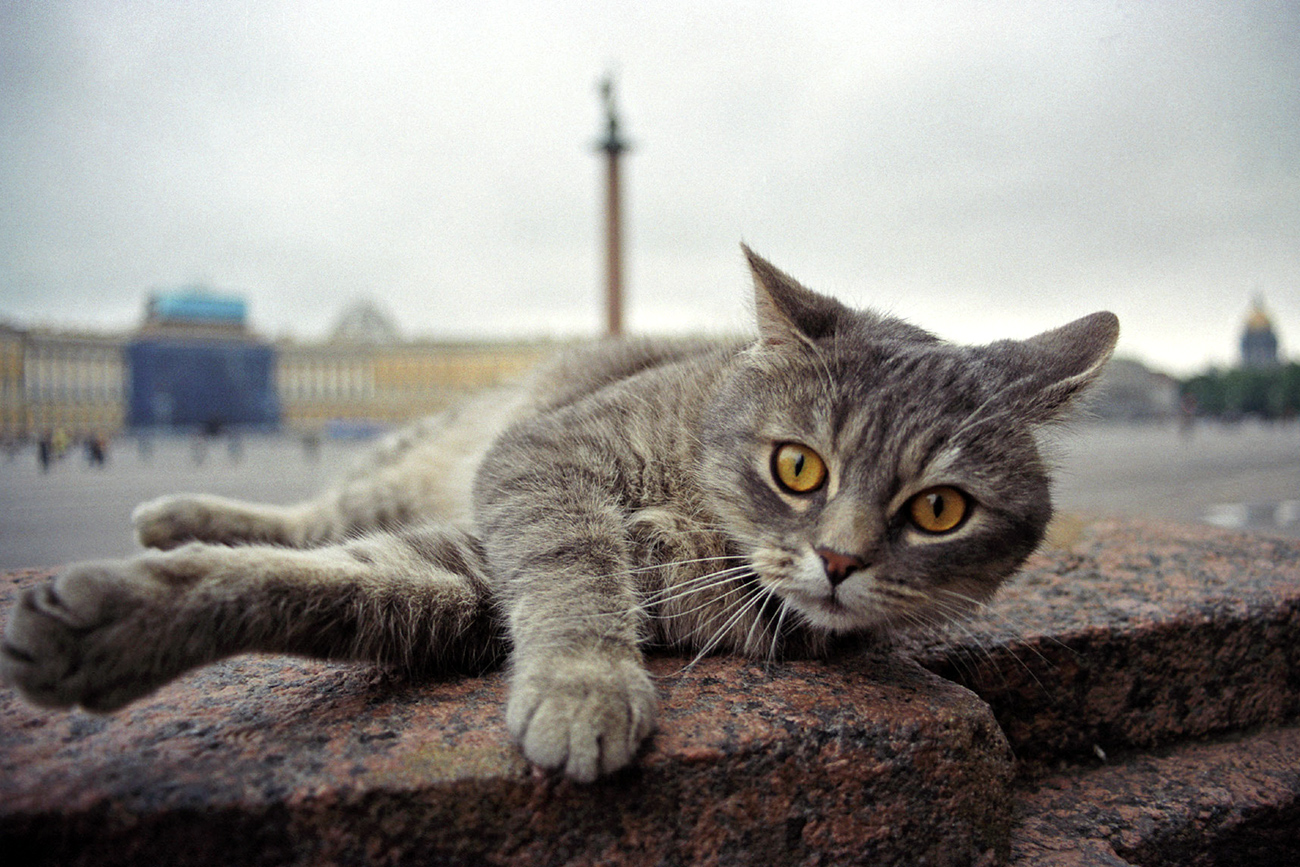
From fairytale characters to Hermitage cats, felines play an important role in Russian culture.
PhotoXpress1. Baun the Cat
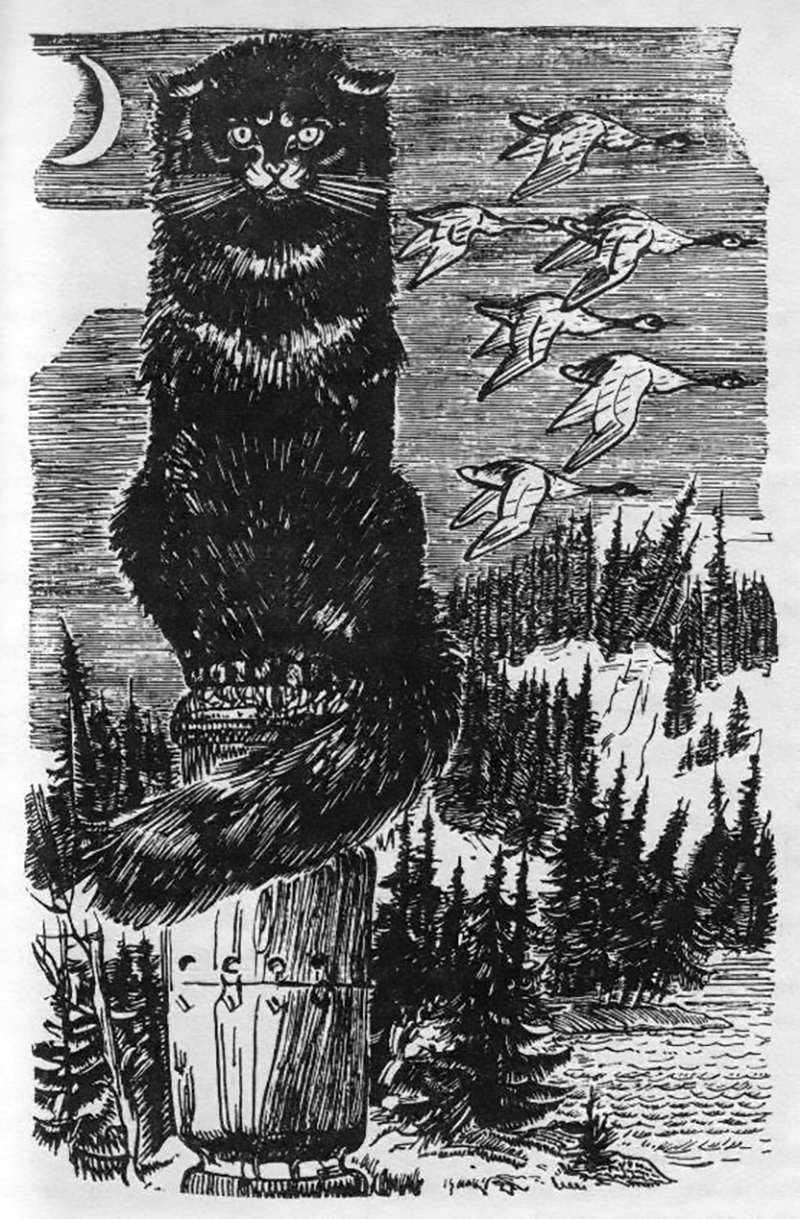 This character from Russian fairy tales uses his magical voice to lure unlucky travelers to sleep before eating them. Source: Archive Photo
This character from Russian fairy tales uses his magical voice to lure unlucky travelers to sleep before eating them. Source: Archive Photo
Baun is a character from Russian fairy tales who possesses a magical voice capable of healing any illness. Most of the time, however, this cat doesn’t help anyone and instead uses his powers to lure unlucky travelers to sleep before eating them.
Occasionally, cunning rulers would send overzealous heroes on ill-fated missions to catch this cat, all the while knowing that these men would likely die in the process. Baun could only be captured by those who wore an iron helmet (or sometimes several), which could mute the sound of the cat’s calls and provide protection from Baun’s powerful claws.
2. A learned cat
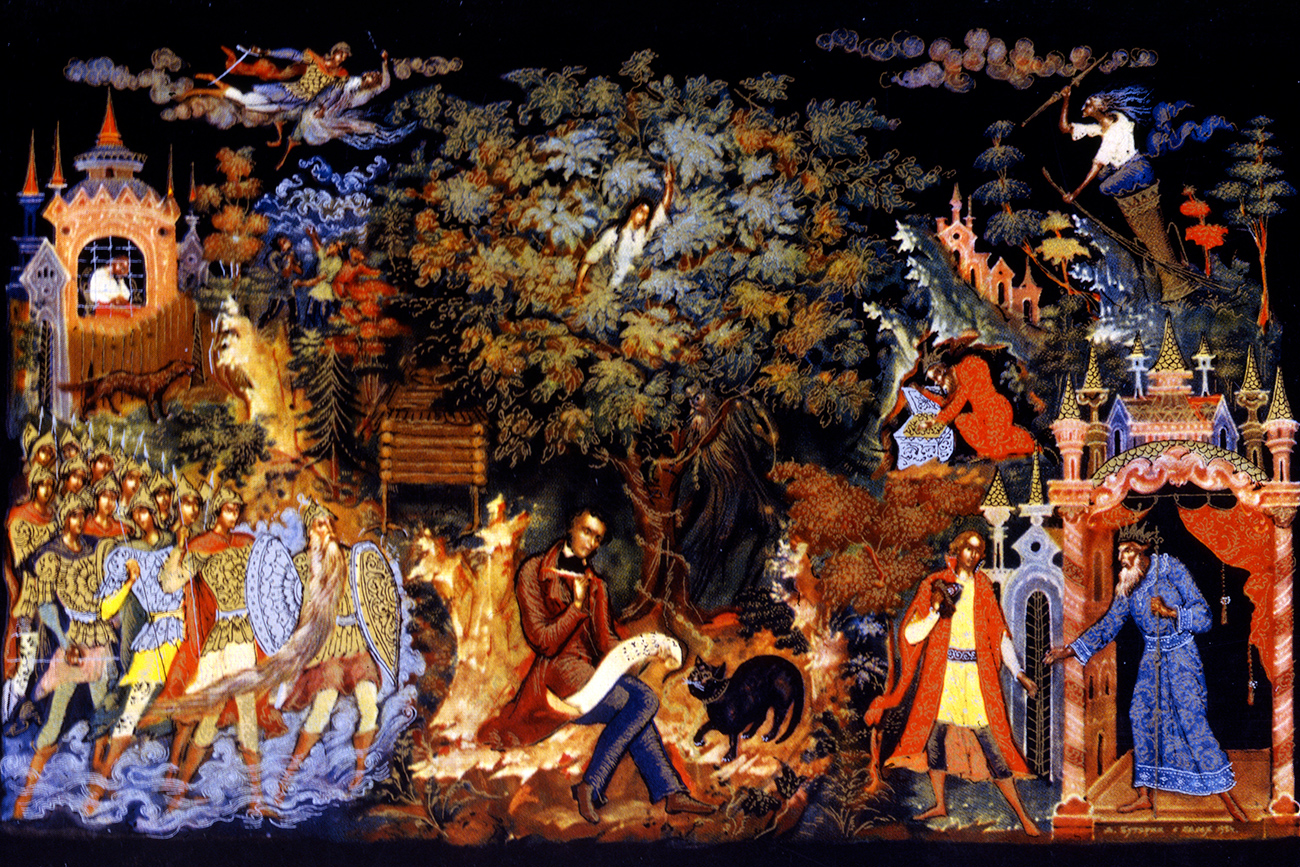 A golden chain ties this cat to a huge oak tree. Every time he moves to the right, the cat sings a song. Every time he moves to the left, he tells a story. Source: Global Look Press
A golden chain ties this cat to a huge oak tree. Every time he moves to the right, the cat sings a song. Every time he moves to the left, he tells a story. Source: Global Look Press
This cat is a distant relative of Baun, as described in Alexander Pushkin's poem Ruslan and Lyudmila. A golden chain ties this cat to a huge oak tree. Every time he moves to the right, the cat sings a song. Every time he moves to the left, he tells a story. Pushkin dedicated only a few lines to him, so this is almost all we know.
Despite this, every Russian child has heard of this cat. Pushkin, as Russians say, is "our everything." As the most famous and beloved poet of the country, he is often quoted and discussed.
3. Behemoth the cat
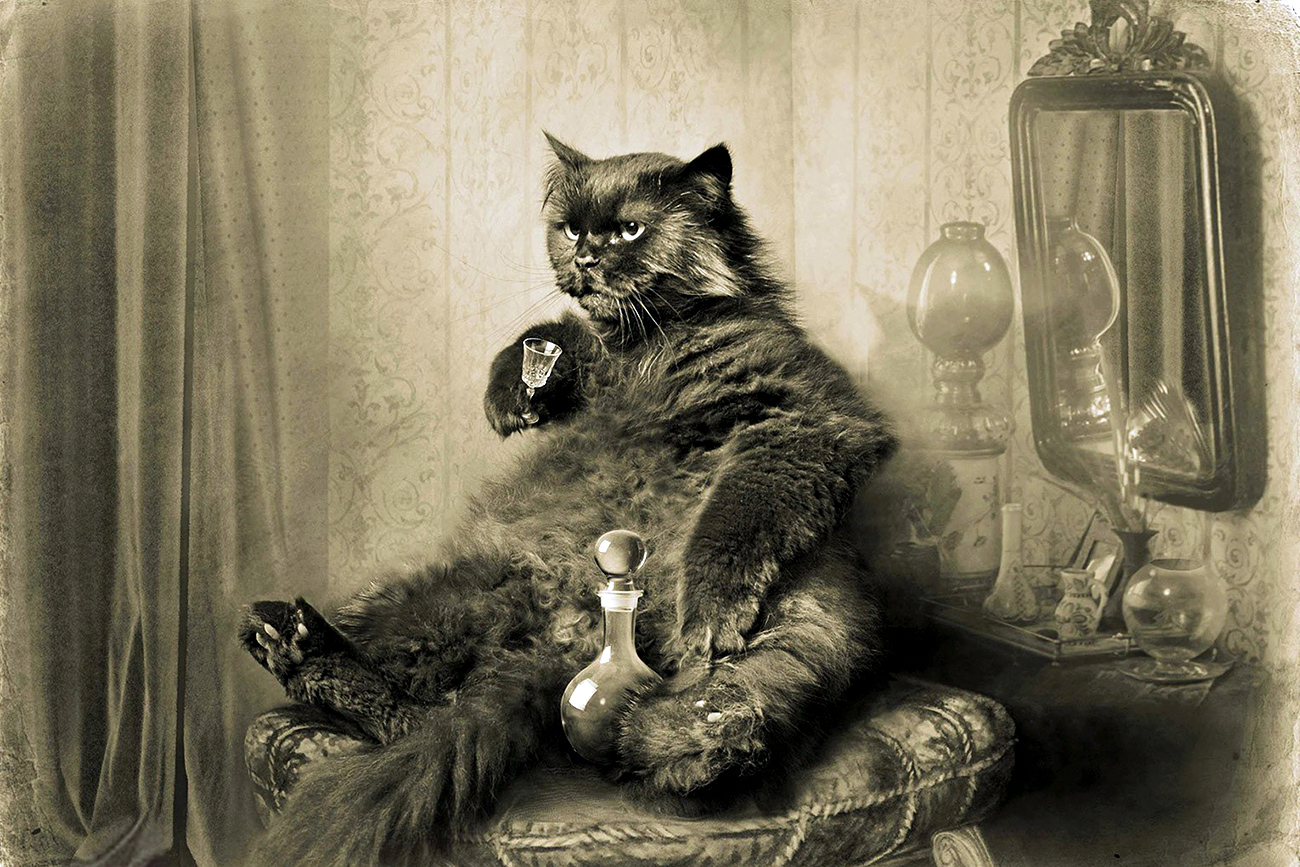 A member of Woland’s entourage, this cat is a typical trickster, adored for his charisma, buffoonery and catch phrases. Source: Bulgakov museum
A member of Woland’s entourage, this cat is a typical trickster, adored for his charisma, buffoonery and catch phrases. Source: Bulgakov museum
This is the enormous, evil cat is from Mikhail Bulgakov's novel, Master and Margarita. He is a member of Woland’s entourage and is described as a typical trickster, adored for his charisma, buffoonery and catch phrases. If you ever take part in a Russian feast, you will definitely hear one of Behemoth’s most common sayings: "Would I ever allow myself to pour vodka for a lady? This is pure alcohol!" And if a Russian friend starts to tell you of his misadventures, he might begin by saying: "So I'm sitting there, not causing trouble, not touching anything, fixing my primus stove…" which is a famous saying of Behemoth’s and describes exactly what this cat loved to do.
4 Matroskin the cat
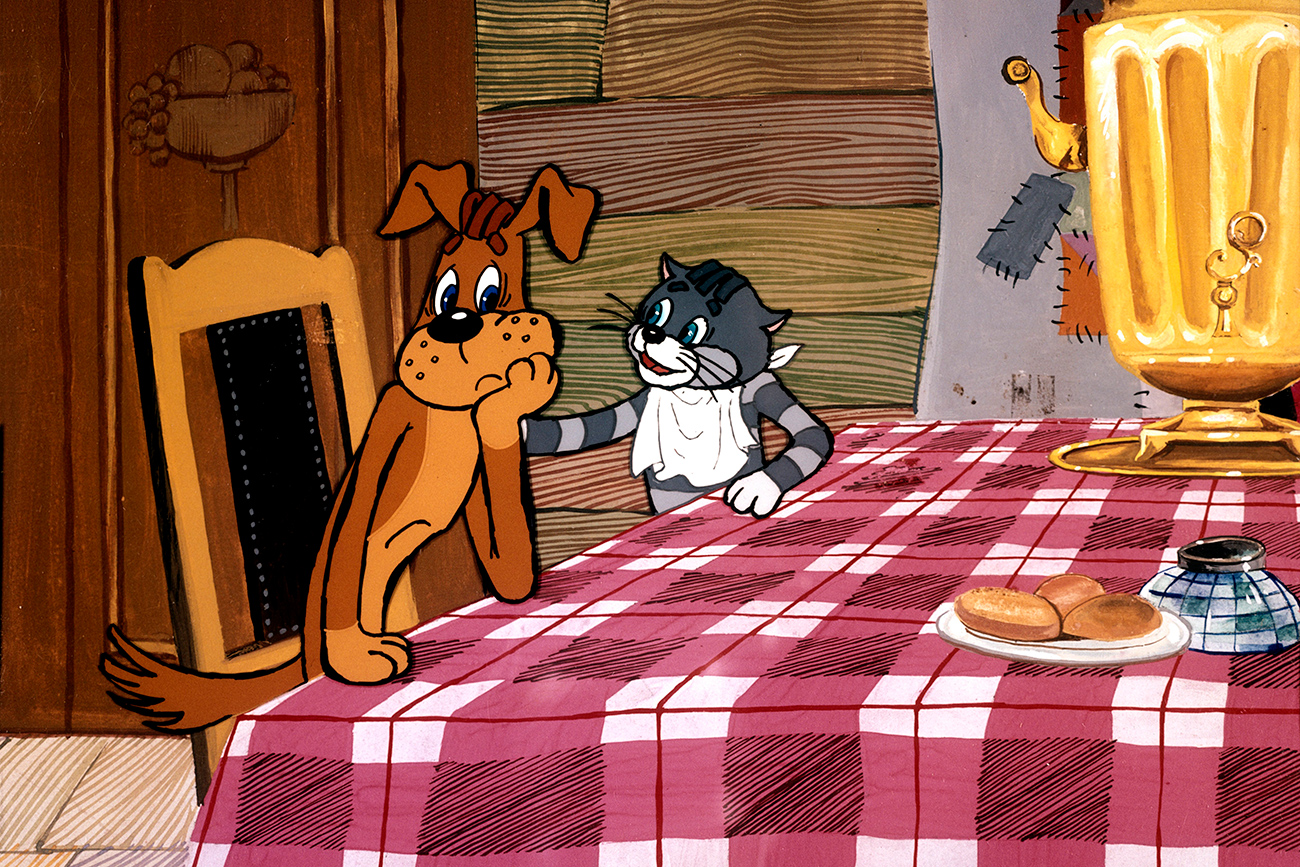 Matroskin is rational and frugal, acting as the head of the household. He knows how to embroider, use a sewing machine and can even play the guitar. Source: Global Look Press
Matroskin is rational and frugal, acting as the head of the household. He knows how to embroider, use a sewing machine and can even play the guitar. Source: Global Look Press
"You also eat your sandwich with the salami side down, just because one cat said it tastes better?" This joke is familiar to anyone who watched the Soviet cartoon Three from Prostokvashino as a child.
This advice about the correct way to eat a sandwich comes from Matroskin the cat. When this homeless cat first met the very independent boy named Uncle Fyodor, the cat said "put the salami on your tongue, it tastes better" and from that moment on, the two became inseparable friends. They eventually run away and become housemates. Matroskin is rational and frugal, acting as the head of the household. He knows how to embroider, use a sewing machine and can even play the guitar.
5. Leopold the cat
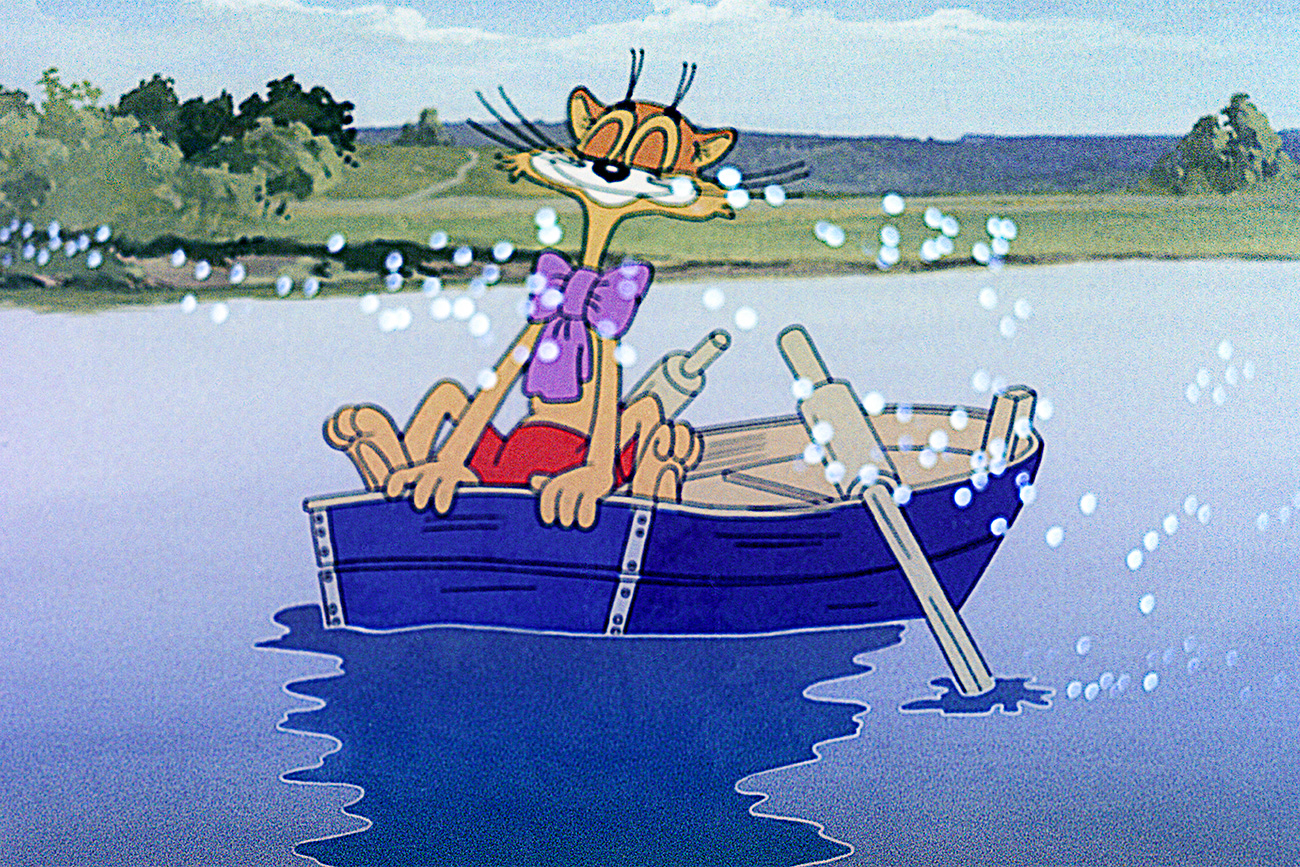 Leopold is a typical intellectual who wears a bowtie, doesn't drink or smoke and never raises his voice. His credo is: "Guys, let's live in friendship!" Source: RIA Novosti
Leopold is a typical intellectual who wears a bowtie, doesn't drink or smoke and never raises his voice. His credo is: "Guys, let's live in friendship!" Source: RIA Novosti
In the American cartoon, Tom and Jerry, Tom always chases the mouse. In the Soviet equivalent, Leopold the Cat, everything happens the other way around. Leopold is a typical intellectual who wears a bowtie, doesn't drink or smoke and never raises his voice. His credo is: "Guys, let's live in friendship!"
Despite his peaceful nature, there are two rascally mice, obsessed with vindicating the entire mouse species, who refuse to leave Leopold in peace. They are constantly finding ways to cause trouble for the cat. However, these mice are not very clever and often end up falling victim to their own pranks before eventually being rescued by Leopold, the sympathetic cat.
6. A kitten named Gav
 This kitten from a Soviet cartoon is naïve and courageous, with a unique talent for finding adventure. Gav is perhaps the most adorable Soviet cartoon character. Source: Global Look Press
This kitten from a Soviet cartoon is naïve and courageous, with a unique talent for finding adventure. Gav is perhaps the most adorable Soviet cartoon character. Source: Global Look Press
“Don't go there. Trouble awaits you.”
”But how can I not go there. It's waiting for me!”
This quote has become a meme and perfectly describes the character Gav the kitten from a Soviet cartoon. Gav has a very unusual name for a cat, since the Russian word, gav, translates to woof (the sounds of a dog’s bark) in English. This kitten is naïve and courageous, with a unique talent for finding adventure. Gav is perhaps the most adorable Soviet cartoon character.
7. St. Petersburg cats
 Residents of St. Petersburg have a special relationship with cats. The city’s most fanatical cat-lovers can meet at the Republic of Cats, a café-museum, which is inhabited by 25 cats and even has its own feline currency. Source: PhotoXpress
Residents of St. Petersburg have a special relationship with cats. The city’s most fanatical cat-lovers can meet at the Republic of Cats, a café-museum, which is inhabited by 25 cats and even has its own feline currency. Source: PhotoXpress
St. Petersburg has an ongoing love affair with cats. The city sells an incredible quantity of cat souvenirs including magnets, postcards, T-shirts and umbrellas. These souvenirs depict cats rooting for Zenit (the local soccer team), playing the guitar, speaking with Pushkin and even trying to catch angels with a net, all set against the backdrop of the city.
It is no surprise that residents of St. Petersburg have a special relationship with cats. During the Siege of Leningrad (1941-1944) more than 600,000 people died from hunger. At this point, almost no cats remained, and the city became flooded with rats. A special government decree ordered that 5,000 new cats be delivered to the city to combat the rodent infestation. Today, the city’s most fanatical cat-lovers can meet at the Republic of Cats, a café-museum, which is inhabited by 25 cats and even has its own feline currency.
8. The Hermitage cats
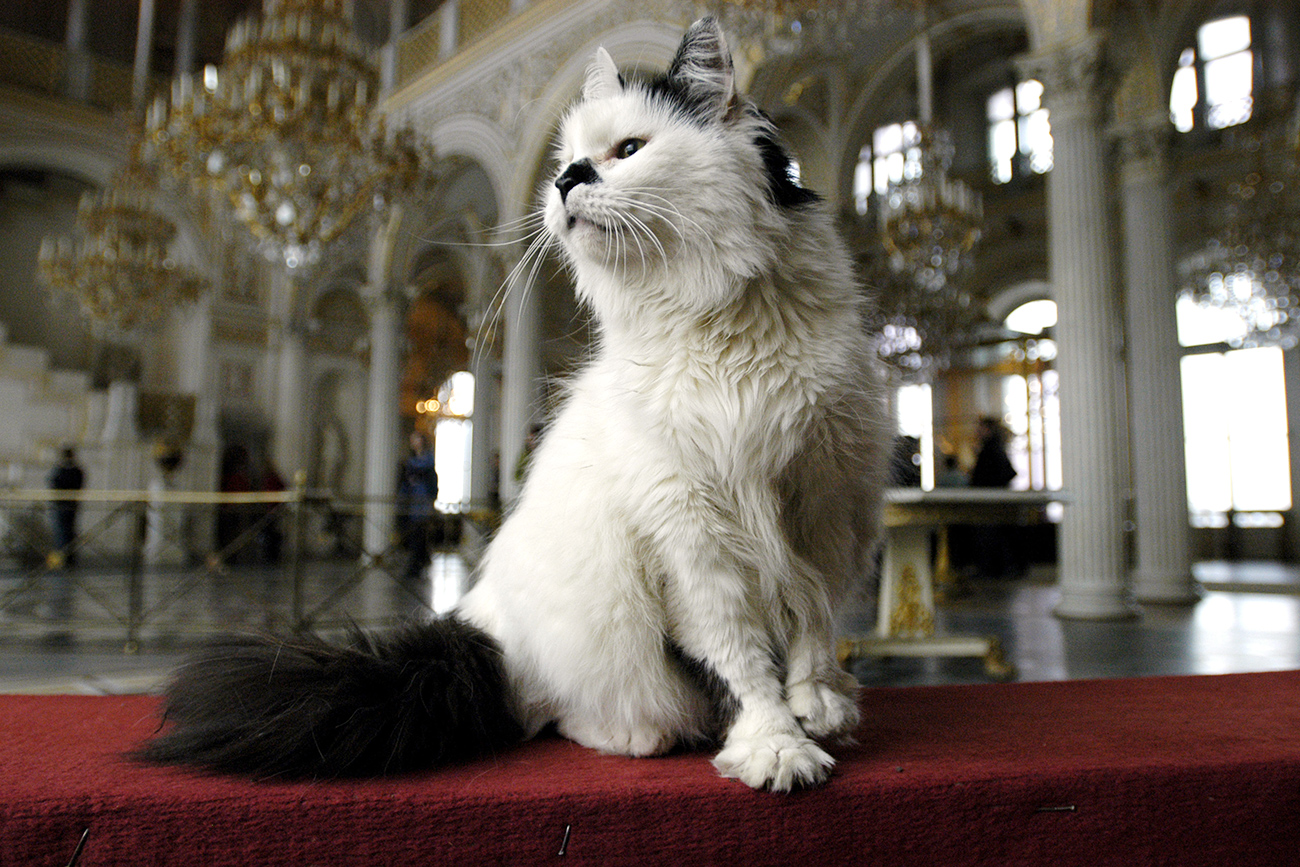 The Hermitage museum budget does not provide funding for the maintenance of the beloved animals, but there is an account where money can be donated specifically for the cats. Source: Legion Media
The Hermitage museum budget does not provide funding for the maintenance of the beloved animals, but there is an account where money can be donated specifically for the cats. Source: Legion Media
Each year, St. Petersburg's most famous museum puts on a special celebration for its feline inhabitants called the Day of the Hermitage Cat. Museum workers lovingly refer to their furry colleagues by the nickname "Hermiki," a play on the name of the museum. These residents have the function of hunting rats in the basements and also serve as unique mascots of the Hermitage.
The museum director, Mikhail Piotrovsky, says that the cats are filmed and remarked upon just as frequently as the Rembrandts. The Hermitage museum budget does not provide funding for the maintenance of these beloved animals, but there is an account where money can be donated specifically for the cats. This account always has plenty of money. The museum cats are fed, vaccinated and spayed or neutered. Each cat even has its own passport, bowl, bed and stall.
Read more: Nordic spirit: Sled dogs of the Siberian North and the Far East>>>
If using any of Russia Beyond's content, partly or in full, always provide an active hyperlink to the original material.
Subscribe
to our newsletter!
Get the week's best stories straight to your inbox